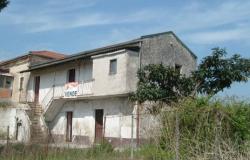Property sales are stronger in urban markets than in provincial ones, with Genoa, Florence and Rome registering the best performances
The Italian property market is slower in towns and villages than in cities. This is the picture that emerges from the latest Osservatorio del Mercato Immobiliare, a quarterly study by Agenzia del Territorio, the Italian equivalent of the Land Registry.
The study examined the Italian property market between January and March 2009. Predictably, it found that sales slowed down over the same period last year, with residential volumes down by an average 18.6%. What’s more interesting, however, is that the downturn shows marked geographical differences. Central and Southern Italy performed better than the North, where transactions went down by 20.6%. And throughout the country, cities did better than towns and villages. In the urban market, the decrease in sales was in the region of 15.8%—against 19.8% in the provinces.
What’s more interesting, however, is that the downturn shows marked geographical differences. Central and Southern Italy performed better than the North, where transactions went down by 20.6%. And throughout the country, cities did better than towns and villages. In the urban market, the decrease in sales was in the region of 15.8%—against 19.8% in the provinces.
Central Italy’s cities held up best, with a reduction in volumes of just 13.2%. Rome and Florence in particular only saw drops of 11.6% and 11.4% respectively, possibly thanks to the wide ranging nature of local demand.
That said, the city that performed best in the first quarter of 2009 is located in northern Italy—Genoa only experienced a 4.2% decline in sales compared to the same period in 2008. The Osservatorio study ascribes this to the fact that the Genoese market already saw a contraction between 2004 and 2008, at a time when the rest of Italy was growing strong, so the correction now is more contained than elsewhere. But the most notable break with the past is that Italian cities are performing better than towns and villages. Throughout the property boom, the provincial market grew more than the urban one. Then, as the economy ground to a halt at the tail end of last year, demand in the provinces started declining a faster pace than in the cities.
But the most notable break with the past is that Italian cities are performing better than towns and villages. Throughout the property boom, the provincial market grew more than the urban one. Then, as the economy ground to a halt at the tail end of last year, demand in the provinces started declining a faster pace than in the cities.
Now, the first quarter of 2009 confirms that provincial capitals are exerting a stronger draw on buyers. Their market share has increased by 1%, from a national average of 28.7% in the first quarter of 2008 to 29.7% in the same period of 2009. Urban appeal is at its highest in central Italy, where cities have a market share of 41.5%.













